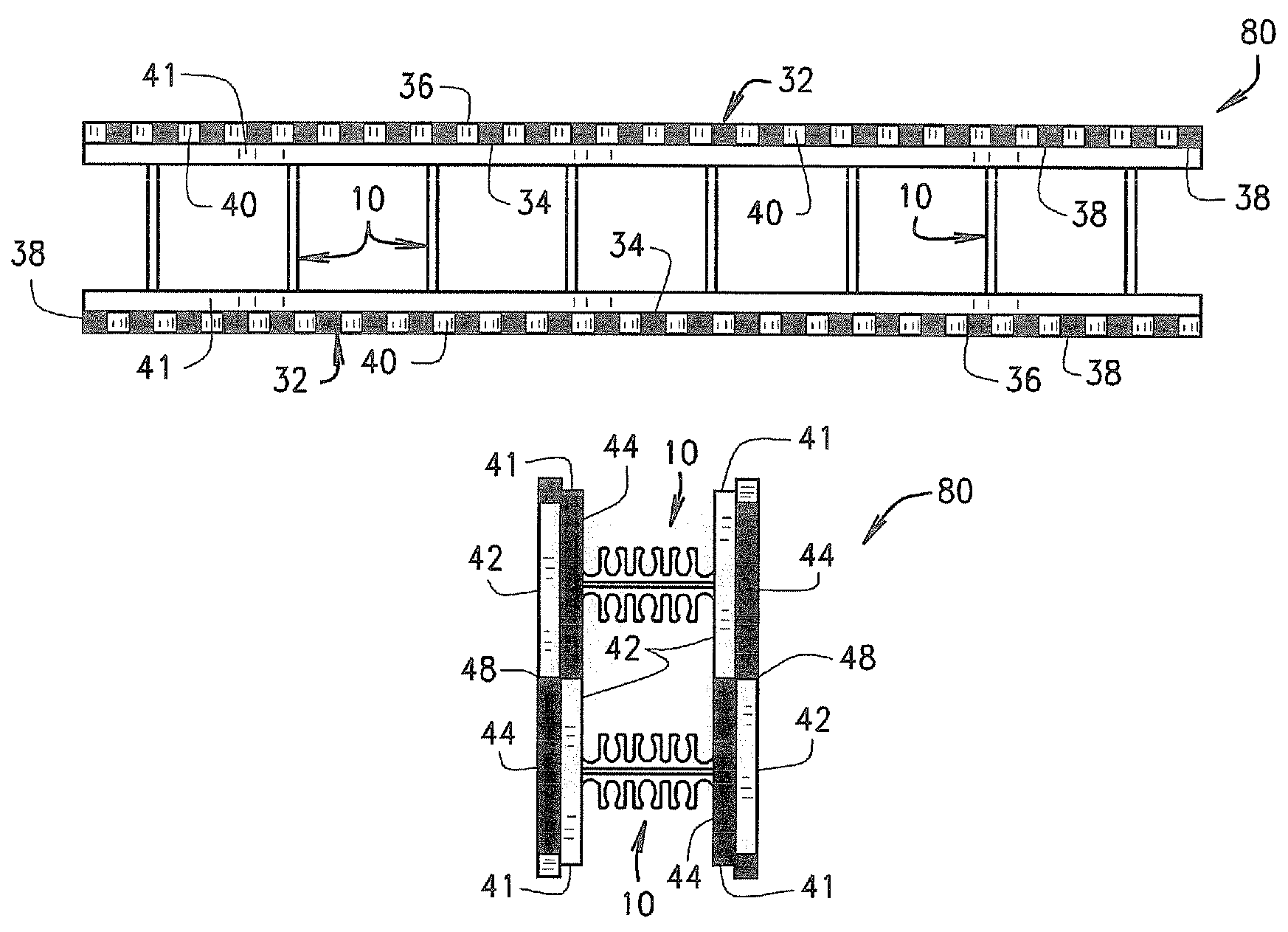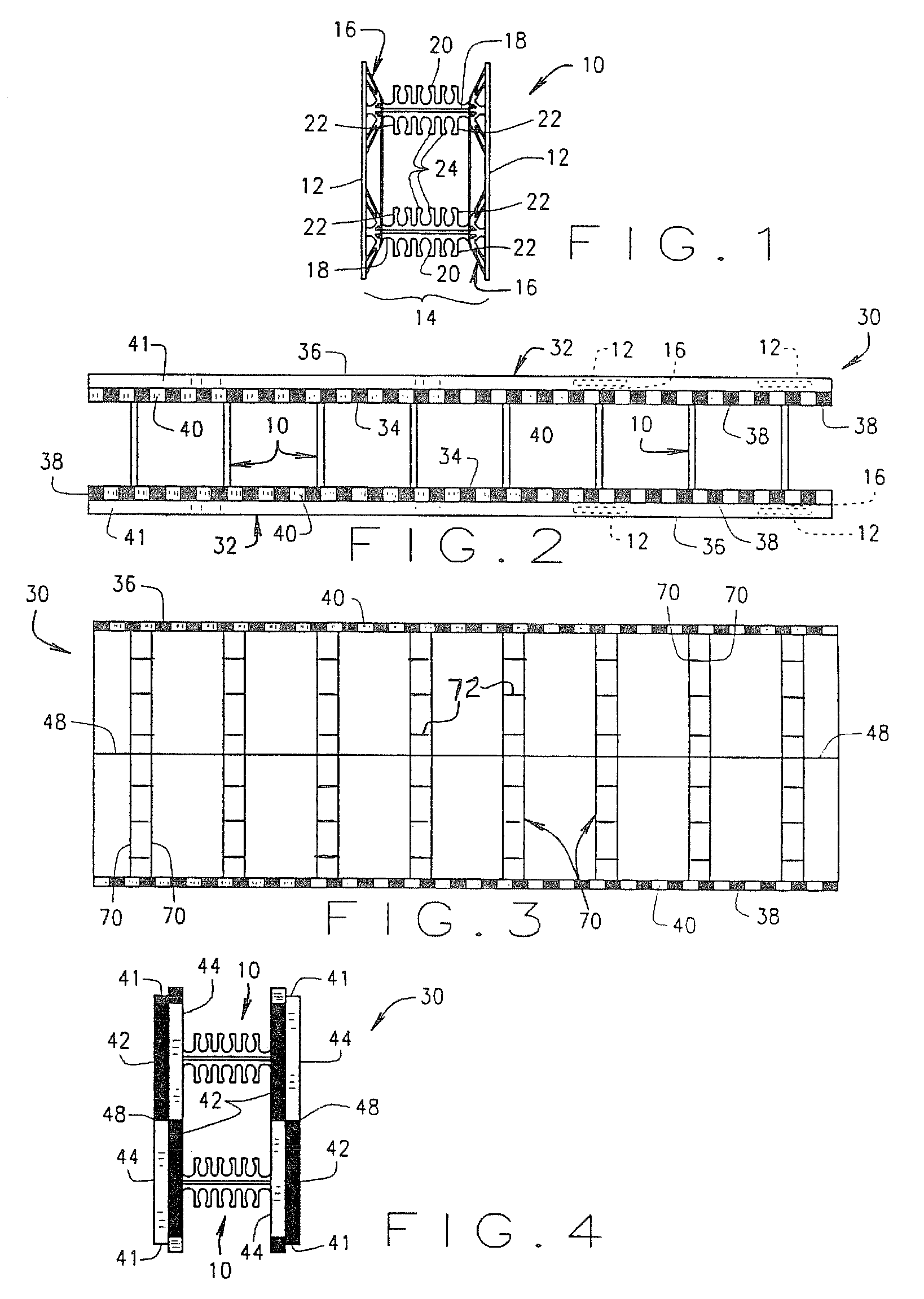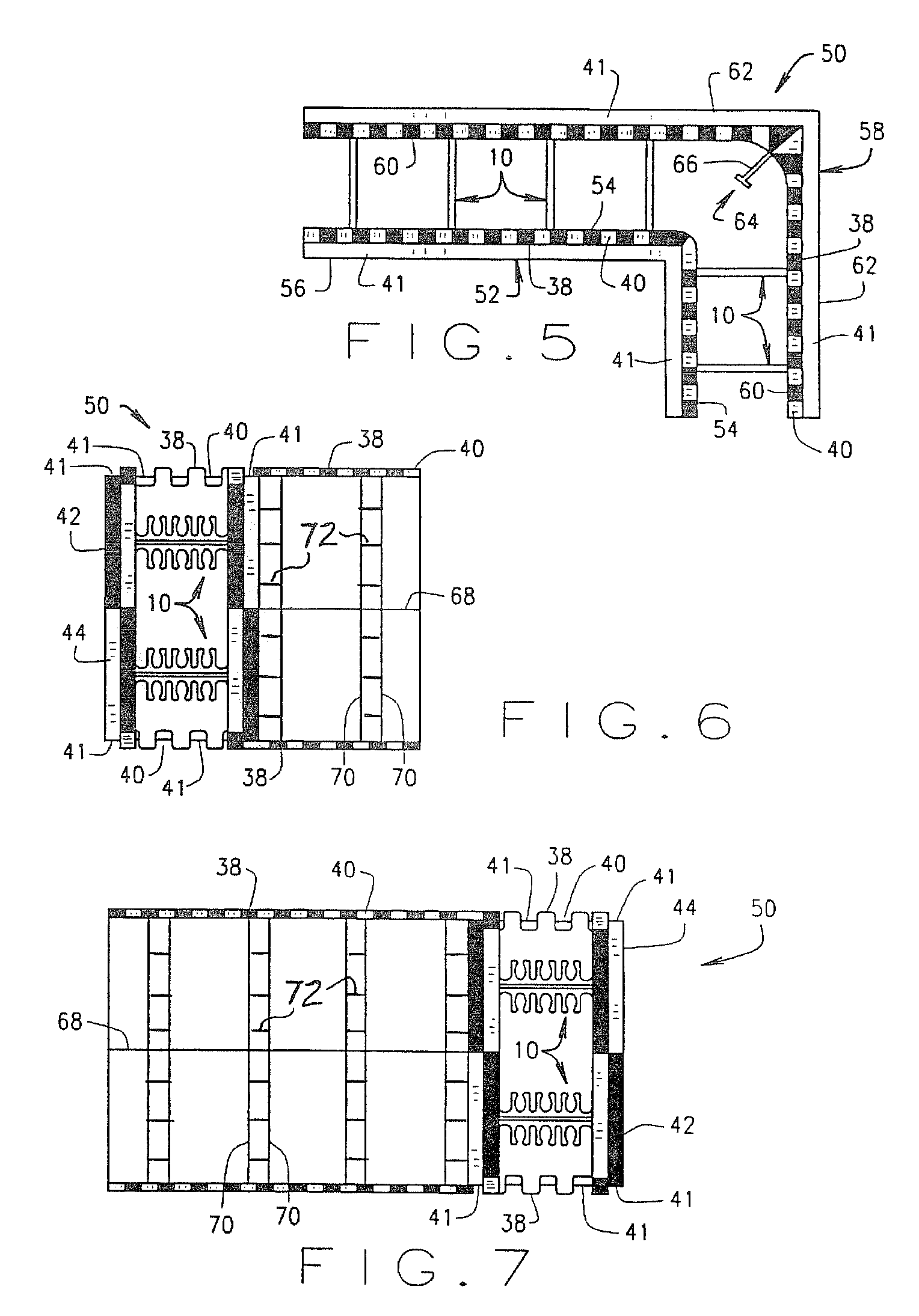Prefabricated foam block concrete forms with open tooth connection means
a technology of connecting means and foam blocks, which is applied in the direction of forms/shuttering/falseworks, shaping building parts, walls, etc., can solve the problems of block design that requires work site assembly, water and other debris is trapped in the socket, and no means are provided to allow such debris and water to be removed
- Summary
- Abstract
- Description
- Claims
- Application Information
AI Technical Summary
Benefits of technology
Problems solved by technology
Method used
Image
Examples
Embodiment Construction
[0029]One embodiment of a form tie 10 of the present invention is illustrated in FIG. 1. The tie 10 includes a pair of flange members 12 separated by, and connected to, a web portion 14. The web portion 14 includes a pair of opposing truss members 16 connected by a pair of substantially identical transverse bridge members 18 having a plurality of rebar retaining seats 20 molded therein. In a preferred embodiment, the tie 10 is constructed from polypropylene. In other embodiments, the tie is constructed of metal, or other suitable materials.
[0030]The rebar seats 20 are substantially identical to each other in configuration, and are arranged in a pair of opposing rows along each transverse bridge 18. Each seat 20 includes a substantially U-shaped well formed by a pair of adjacent fingers 22. An inwardly spanning lateral knuckle or projection 24 is formed on the distal end of each pair of adjacent fingers 22, creating a distance between opposing projections 24 that is substantially les...
PUM
 Login to View More
Login to View More Abstract
Description
Claims
Application Information
 Login to View More
Login to View More - R&D
- Intellectual Property
- Life Sciences
- Materials
- Tech Scout
- Unparalleled Data Quality
- Higher Quality Content
- 60% Fewer Hallucinations
Browse by: Latest US Patents, China's latest patents, Technical Efficacy Thesaurus, Application Domain, Technology Topic, Popular Technical Reports.
© 2025 PatSnap. All rights reserved.Legal|Privacy policy|Modern Slavery Act Transparency Statement|Sitemap|About US| Contact US: help@patsnap.com



